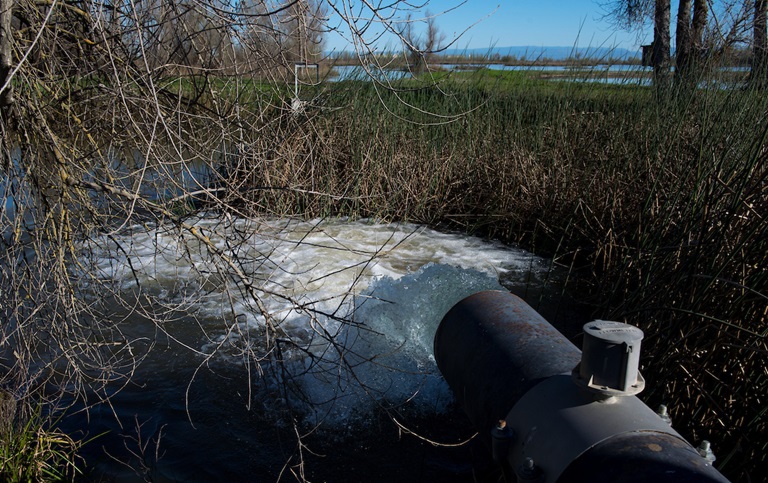Through Challenges of Drought, Locally Led Solutions for Groundwater Sustainability Are Advancing
Groundwater wells at Gray Lodge Wildlife Area in Gridley. 
By Paul Gosselin, Deputy Director, Sustainable Groundwater Management, California Department of Water Resources
California’s groundwater basins are a critical part of the state’s water supply for millions of people. Small communities rely on it, individual homes rely on it. It is a source of drinking water as well as irrigation for California’s agricultural community.
Groundwater is a fragile lifeline for some communities and as we find ourselves entering a third year of a severe drought, conservation will be critical as many of the monitoring wells statewide now show groundwater levels below historical average.
Despite this year’s dire drought circumstances, there is hope on the horizon for long-term groundwater sustainability and drought resiliency. That’s because California started taking action after the last drought.
In 2014, the California Legislature called up local groundwater agencies to take responsibility for protecting groundwater supplies for future generations with the passage of the Sustainable Groundwater Management Act (SGMA), establishing a regulatory framework for improving groundwater management over a 20-year period. The Department of Water Resources (DWR) plays an important role in overseeing local compliance towards groundwater sustainability, but this effort focuses on local groundwater sustainability agencies (GSAs) making decisions that are best for their communities.
SGMA established that local control and knowledge of groundwater conditions is the best approach to achieving sustainability. GSAs are expected to work with the groundwater users in their basins to develop and implement plans for how groundwater is managed locally under a variety of conditions, including increasingly extreme drought conditions due to climate change.
This week is Groundwater Awareness Week, which offers an opportunity to reflect on the accomplishments that the state and local GSAs have made navigating the challenges and opportunities presented by SGMA. After only seven years since SGMA became law, the process is working. With state support, local GSAs are making great progress meeting SGMA’s statutory deadlines and moving forward in the right direction towards a sustainable groundwater future.
January 2022 marked two major SGMA milestones. First, DWR completed 20 basin-wide assessments predominantly from the most critically overdrafted basins in the San Joaquin Valley, which included reviewing a total of 42 plans that were submitted to the state in 2020; and second, all of the remaining medium- and high-priority groundwater basins responsible for submitting plans by January 31, 2022 met the statutory deadline.
As local efforts progress, the state continues to build upon the resources it’s providing local agencies. DWR’s prior investments include over $175 million in groundwater planning and project grants, as well as efforts to install groundwater monitoring wells, data and tools, and support to have third-party facilitators foster meaningful outreach. In 2022, DWR will continue to provide technical support services and facilitation support, ramp up subsidence data collection from annually to quarterly, and complete Airborne Electromagnetic (AEM) surveys for all of the high-and-medium priority groundwater basins in the state. Additionally, over $350 million in grants will be available for planning and implementation projects to help regional groundwater agencies comply with SGMA. Other state agencies are providing resources, including water use efficiency grants from the California Department of Food and Agriculture and a pilot incentive program by the Department of Conservation for strategic land repurposing to help minimize the impacts of using less groundwater.
There is no doubt that the 2022 water year is going to present challenges for communities, the environment and agriculture. However, the efforts to-date from local leaders, groundwater agencies, and community members to step up and meet the requirements of a new, historic law instills confidence that these early efforts provide us a foundation for continued progress towards sustainable groundwater management.
